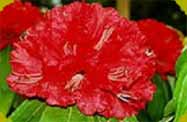|
Hedychium spicatum
Ham ex Smith

|
Species |
Hedychium spicatum
Ham ex Smith |
|
Local Name |
Sara,Pankha phul (Nep). |
|
Synonym |
|
|
Family |
Zingiberaceae. |
|
Habitat |
The plant is
perennial leafy herb up to 2 m tall. Grown in the rich
soils with plenty of water in the forests, swampy
grounds on the side of drains and moist semi- shady
situations, of the subtropical to temperate Himalayas. |
|
Distribution |
Distributed in the subtropical and temperate Himalayas. |
|
Sikkim |
Yuksom, Yangyang,
Karponang, Raj-Bhawan, Lingtam, Padamchen |
|
Out side |
Assam, Arunachal Pradesh, Himachal Pradesh (Simla,
Mahasu, Jogindra Nagar), Uttar Pradesh (Nainital, Almora,
Chamoli, Ranikhet) also distributed in Malaysia, Japan
and Europe, Bhutan (Phuntsoling, Chukkha, Sarbhang,
Deothang, Thimpu and Punakha), Darjeeling (Labha,
Rkungbee, Lopchu to Jorbungalow). |
|
General |
|
|
Morphological |
It is a perennial, robust herb up to 2 m tall. Rootstock
horizontal tuberous, aromatic, bitter comphoraceous
taste. Leaves sessile, broadly lanceolate, 30- 60 cm
long and up to 10 cm wide tail like lip. Flowers white,
with orange red- base, fragrant in terminal spike
stamens filament red, capsule globular, 3- valved with
orange red lining. Seeds oblong, black with a red aril.
|
|
Flowering |
June-October. |
|
Fruiting |
June-October. |
|
History |
|
|
Parts |
Rhizome and root |
|
Status |
Vulnerable. |
|
Phytochemistry |
Structure determination of a furanoid diterpene-
hedychinone isolated from rhizomes; hydroxyhedychenone
isolated from rhizomes; benzyl cinnamate, 1,8- cineole,
benzyl acetate and lindyl acetate isolated; detection of
cineole, limonene,, -terpinene, -phellandrene, p-
cymene, linalool, caryophyllene and -terpineol in
rhizome essential oil by GLC. |
|
Agrocultivation |
The divisions of rhizome propagate the plant. |
|
Reference |
1. Chopra, R.N;
S.L. Nayar; I.C. Chopra, (1999). Glossary of Indian
Medicinal Plants National Institute of Science
Communication CSIR, New Delhi. 130 131.
2. Kumar, Sushil;
Janardhan Singh; N.C. Shah; Vinay Ranjan (1997). Indian
Medicinal and Aromatic Plants facing Genetic
Erosion,CIMAP, Lucknow.126 128.
3. Noltie, H.J.
(1994). Royal Botanic Garden, Edinburgh. Flora of Bhutan
(Vol. 3, Part 1). 203.
4. Polunin,
Oleg; Stainton, Adam. (1990). Concise Flowers of the
Himalaya, Delhi. Oxford University Press Bombay,
Calcutta Madras. 148.
5. Progress
Report of the Project "Studies on Medicinal Plants of
Sikkim" (1998 2001). State Council of Science and
Technology for Sikkim.
6. Satyavati,
G.V; A.K Gupta; Neraj Tendon (1987) Medicinal Plants of
India
(Vol. 2).
Indian council of Medicinal Research New Delhi. 1 4.
7. Tsarong,
Tsewang J. (1994). Tibetan Medicinal Plants. Tibetan
Medicinal Publications, Kalimpong West Bengal. 37.
8. Thakur, R.S;
H.S Puri; Akhtar Hussain (1989). Major Medicinal Plants
of India. CIMAP Lucknow. 303 306. |
|
Medicinal |
|
|
Ayurvedic |
It is used in Ayurvedic preparations like
shatyadichurna, shatyadi Quath and Himanshu tail. |
|
Unani |
|
|
Traditional |
|
|
Others |
The rhizome is
carminative, emmenogogue, expectorant, stimulant,
stomachic and is used in the general anasarc, bad taste
in mouth, colic, fever, enteric fever and respiratory
disorders.
The rhizome in
powdered form is sprinkled as an antiseptic agent and
also used as a poultice for various aches and pains.
The powdered rhizome 10 15 g, with 15 ml honey is given
in divided doses for relief from bronchial asthma. |
|
Prepartation |
|
|
Picture |
|
|
|
|
|

Rhododendron


Amongst the many
floral treaties of Sikkim Himalaya one of the earliest ones may be
found over the genus Rhododendron (Gk. rhodo = red, dendrons = tree
). |
| |
|
|
|

Orchid


Orchid
known for their brilliance in colors, unusual shapes
attractive growth habits, variety in fragrance and
exquisite beauty can attract any nature lovers.
|
| |
|
|
|

Medicinal Plant


Sikkim
with its total geographical area of 7,096 sq km is
bestowed with a huge diversity of flora and fauna.
|
| |
|
|
|
|
|